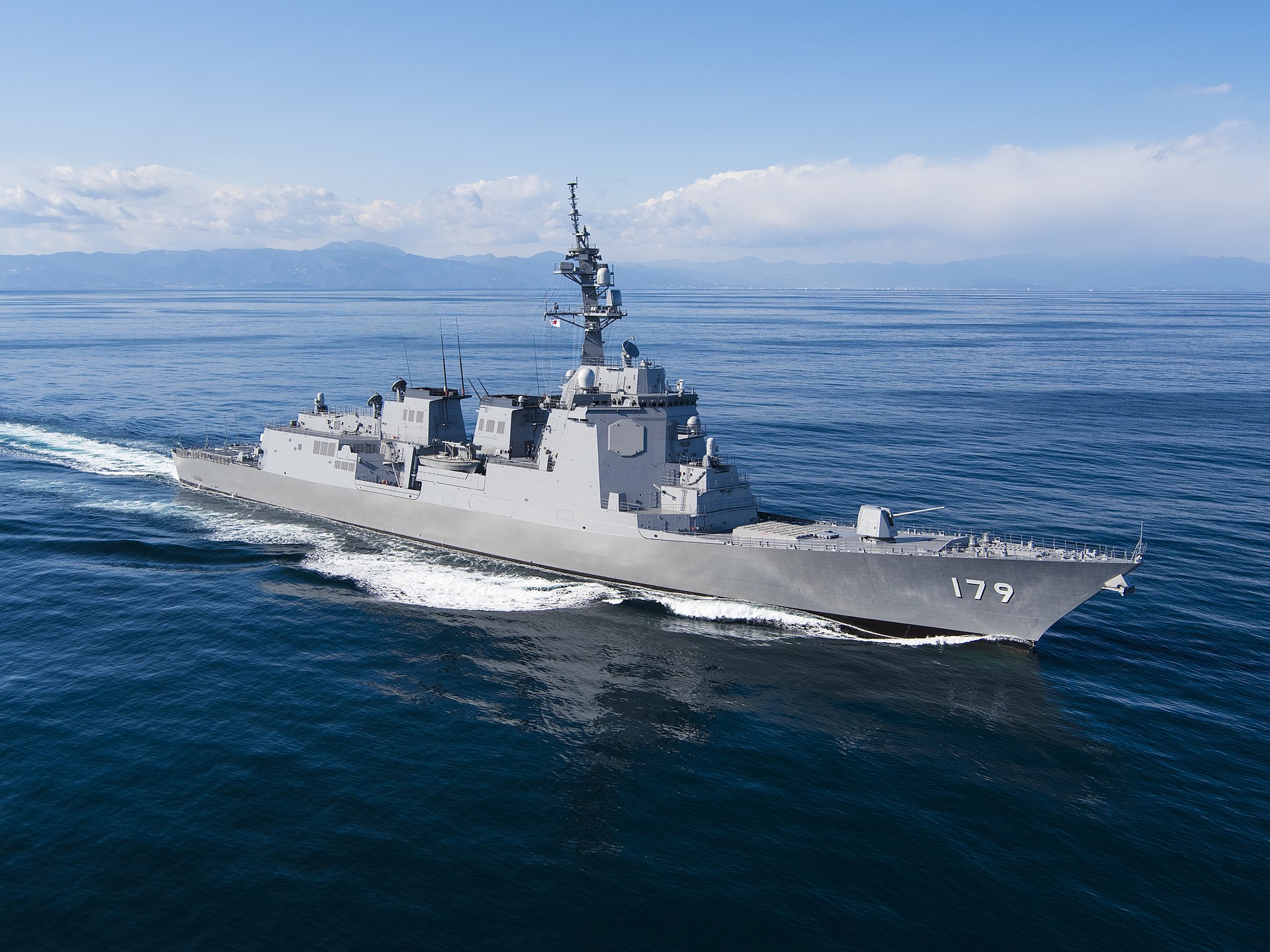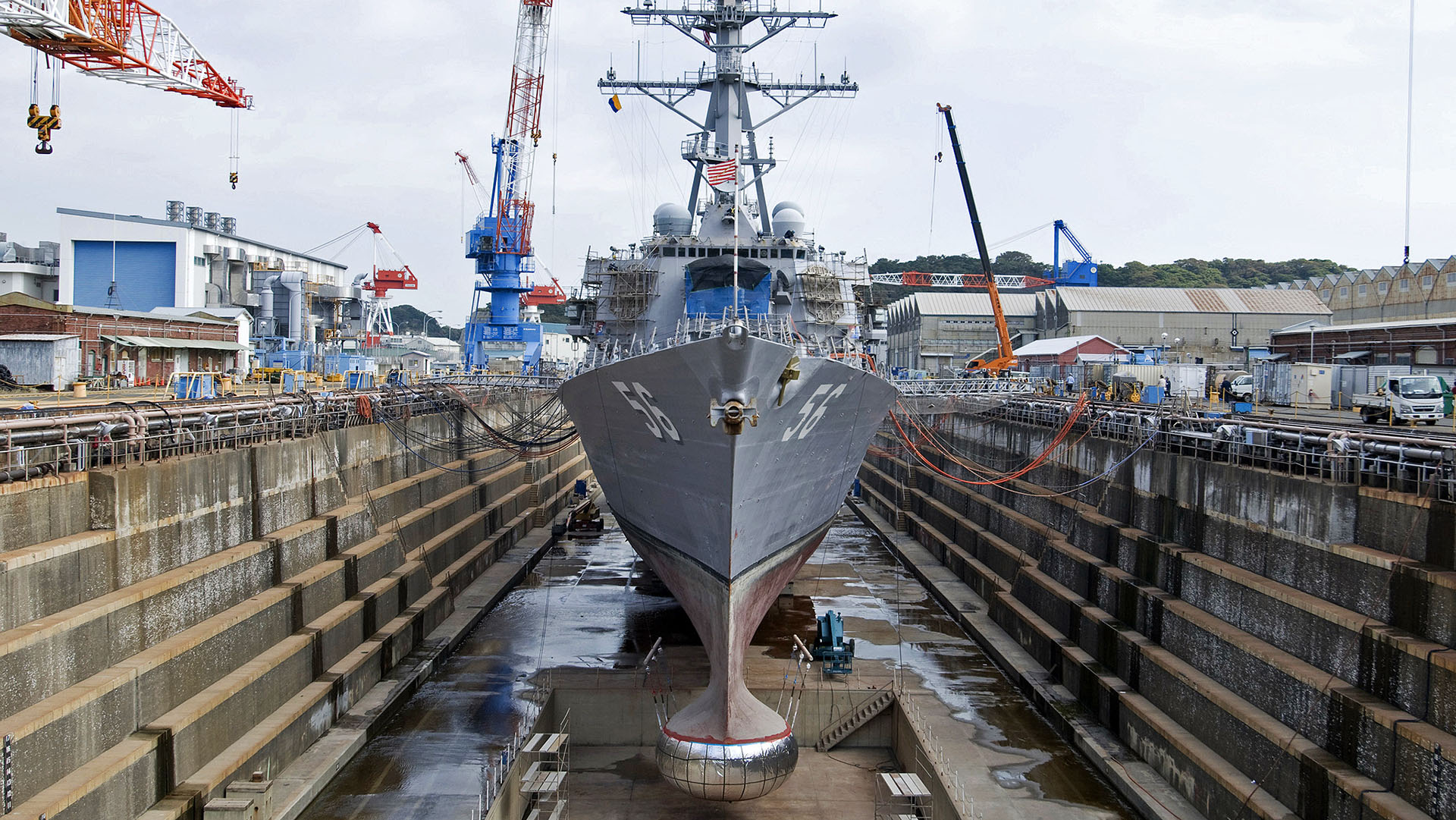Upset by the pace of domestic shipbuilding, President Donald Trump said he may look to foreign companies to produce vessels for the U.S. His comments came after his sweeping executive order seeking to revamp the American shipbuilding industry that pales in comparison to China’s, which has been assessed to have a whopping 200-times larger capacity than the United States. Trump didn’t spell out whether he was talking about commercial ships, naval vessels or both. However, this makes particular sense for expanding the U.S. Navy and is an option we have repeatedly highlighted in the past, given the litany of issues the service is facing.
“We may order, would have to go to Congress for this, but we may buy some ships from other countries that we’re close to and do great jobs with ships,” Trump told reporters on Thursday. “But we’re going to start the process of rebuilding. We don’t really essentially build ships anymore, which is ridiculous. It’s going to be very big business for us in the not-too-distant future. But in the meantime, we have countries that do very well at building ships, and we’ll be dealing with those countries. So we may be ordering top-of-the-line ships from those countries. And within a fairly short period of time, we’ll be building our own ships. So we’ll probably have to go to Congress for that, but we’re not going to have a problem.”
We reached out to the White House for clarification about what kinds of ships sparked Trump’s interest. However, his remarks come amid concerns about the growth of the Chinese Navy in both mass and capability. You can read more about that yawning gap here.
As we have explained in past reporting, both South Korea and Japan are building vessels now that are related to the Arleigh Burke class, which currently serves as the backbone of the U.S. Navy. This puts both countries in a unique position to build U.S.-spec Burke destroyers, or at least substantial parts of them. They also have other models that are unlike those currently in the fleet, including smaller warships. Logistics ships and sea bases are also well within their capabilities.

South Korea has already made inroads into the U.S. shipbuilding industry. The Hanwha Ocean Co. recently purchased the Navy shipyard in Philadelphia and secured Korea’s first contract to overhaul a U.S. Navy ship. Hanwha’s main Korean competitor, HD Hyundai Heavy Industries, recently pitched a shipbuilding plan to the U.S. government, according to a report from the South Korean Chosun news outlet in March.
“If maritime defense cooperation with the U.S. becomes full-fledged, we can build up to five ships per year, and there is room for further expansion,” Woo-man Jeong, managing director of the Specialized Ship Business Unit at HD Hyundai Heavy Industries, told the publication last month. “We have over 250 engineers who can design and build Aegis ships with the same performance as the U.S. HD Hyundai Heavy Industries is the only shipbuilder in Korea that directly designs and builds Aegis ships. It is also directly building five of the six Aegis ships that the Korean Navy will possess.”
Woo-man likened the Aegis ships to the Arleigh Burke class U.S. guided missile destroyers.

Last year, the Republic of Korea Navy (ROKN) commissioned the first of its new KDX-III Batch 2 destroyers, ROKS Jeongjo the Great. The service’s largest ship, among the many advanced features incorporated in this class, is the latest version of the Korean Vertical Launch System.
Japan builds a large array of warships, including three classes of destroyers that are related to the Arleigh Burke class. In terms of unique designs, two years ago, Japan launched its eighth Mogami class frigate, JS Yūbetsu. The stealthy Mogami class 30FFM Multi-Function Frigates will have the ability to perform various mission sets for the Japanese Maritime Self-Defense Force.


There is also the possibility that the U.S. could plug into its AUKUS submarine deal with Australia and leverage its conventional shipbuilding capacity for its needs.
Trump’s suggestion about purchasing foreign ships was a response to statements by National Security Director Mike Waltz about how China was vastly outproducing the United States in total shipbuilding capacity.
“Mr. President, last year, the Chinese received 1,700 orders from new ships. American shipyards received five,” Waltz said. “Under your leadership, like so many other industries, we are going to revitalize and make shipbuilding and maritime great again with these blue-collar jobs. These are the cranes, the ports, opportunity zones, and drive that investment back in. And we have, under that executive order, and also one to streamline foreign military sales, for people that want to buy our equipment, and, of course, acquisition reform, all just this week.”
Those concerns are the crux of “Restoring America’s Maritime Dominance,” the executive order Trump signed on Wednesday seeking to boost domestic shipbuilding capacity.
“Recent data shows that the United States constructs less than one percent of commercial ships globally, while the People’s Republic of China (PRC) is responsible for producing approximately half,” the executive order states. “Rectifying these issues requires a comprehensive approach that includes securing consistent, predictable, and durable Federal funding, making United States-flagged and built vessels commercially competitive in international commerce, rebuilding America’s maritime manufacturing capabilities (the Maritime Industrial Base), and expanding and strengthening the recruitment, training, and retention of the relevant workforce.”
The order calls for the “Assistant to the President for National Security Affairs (APNSA), in coordination with the Secretary of State, the Secretary of Defense, the Secretary of Commerce, the Secretary of Labor, the Secretary of Transportation, the Secretary of Homeland Security, the United States Trade Representative (USTR), and the heads of executive departments and agencies (agencies) the APNSA deems appropriate,” to submit a Maritime Action Plan (MAP) within 210 days.
That plan includes a requirement for a six-month “assessment of options both for the use of available authorities and resources, such as Defense Production Act Title III authorities, and for the use of private capital to the maximum extent possible to invest in and expand the Maritime Industrial Base.”
Among the options to be considered are the “investment and expansion of commercial and defense shipbuilding capabilities, component supply chains, ship repair and marine transportation capabilities, port infrastructure, and the adjacent workforce.”
The Secretary of Defense “shall pursue using the Office of Strategic Capital loan program to improve the shipbuilding industrial base,” the order continues.
The executive order calls for the U.S. Army, Navy, and Coast Guard to list their top recommendations for new vessels.
“Within 45 days of the date of this order, the Secretary of Defense, the Secretary of Commerce, the Secretary of Transportation, and the Secretary of Homeland Security shall conduct a review of shipbuilding for United States Government use and submit a report to the President with recommendations to increase the number of participants and competitors within United States shipbuilding, and to reduce cost overruns and production delays for surface, subsurface, and unmanned programs,” the executive order explains. “This report must include separate itemized and prioritized lists of recommendations for the United States Army, Navy, and Coast Guard and shall be included in the MAP.”

Trump’s executive order is similar to the bipartisan SHIPS Act proposed last year, which you can read about here, but it appears to go farther in some aspects, and there may be significant push back as a result.
Building ships overseas, especially naval warships, would be a major change for the U.S. government. Shipbuilding is extremely politicized and special interest driven as it is. Industrial base protectionism is a huge driver in any discussion about shipbuilding domestically, let alone overseas. But what is clear is that the Navy’s demand for warships outpaces the potential supply, and just keeping the ships it already has serviced with the existing industrial base is becoming increasingly challenging, which impacts combat readiness. Expanding shipbuilding to close allies would certainly help in these regards, as would further increasing foreign yards that can service American warships. This is especially critical in a time when China’s fleet size is ballooning.
While capacity could be leveraged now to build American naval ships in foreign yards, those same companies could invest in the U.S., building new infrastructure, which could help increase domestic capacity in the long term.
But once again, no matter how logical this all sounds, doing so is going to probably stoke a fight in congress. Any dollars moving away from key U.S. shipyards will be challenged. But if Trump’s budget were to call for a major expansion in shipbuilding, even if the money was there, doing it would be very problematic using existing infrastructure in the U.S. alone.
Contact the author: howard@thewarzone.com
